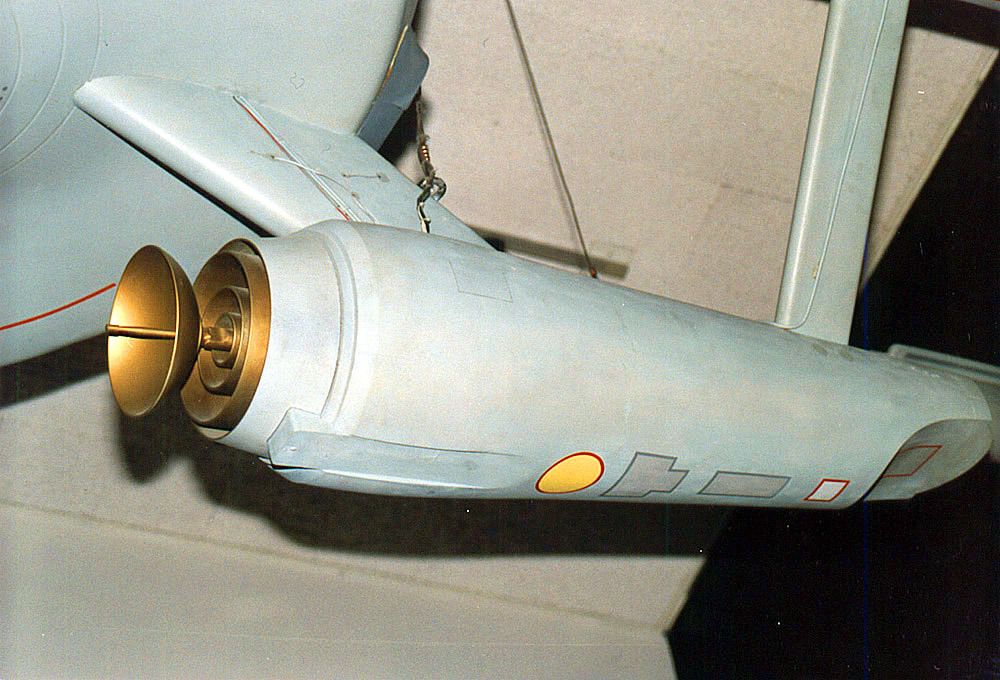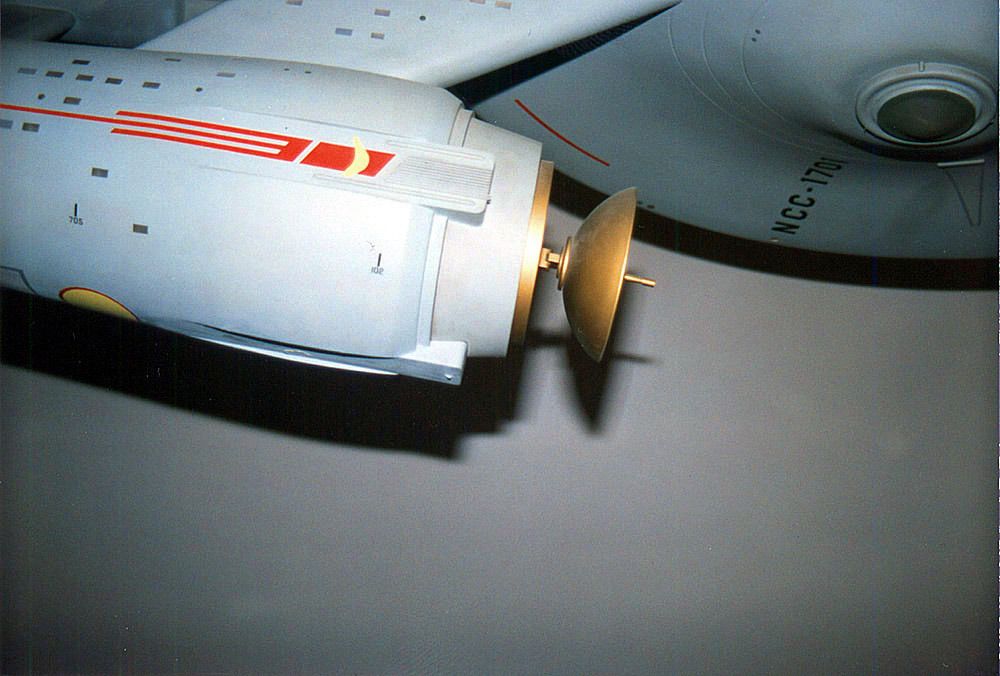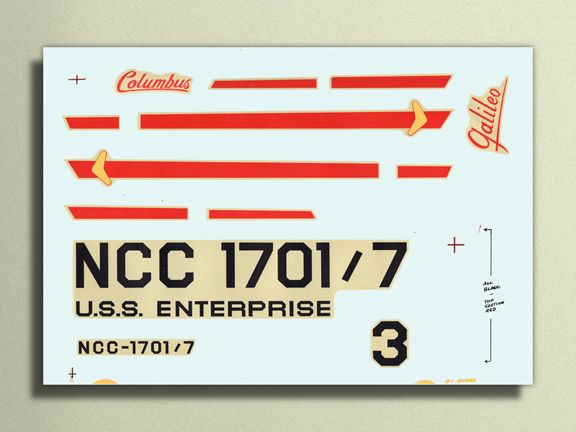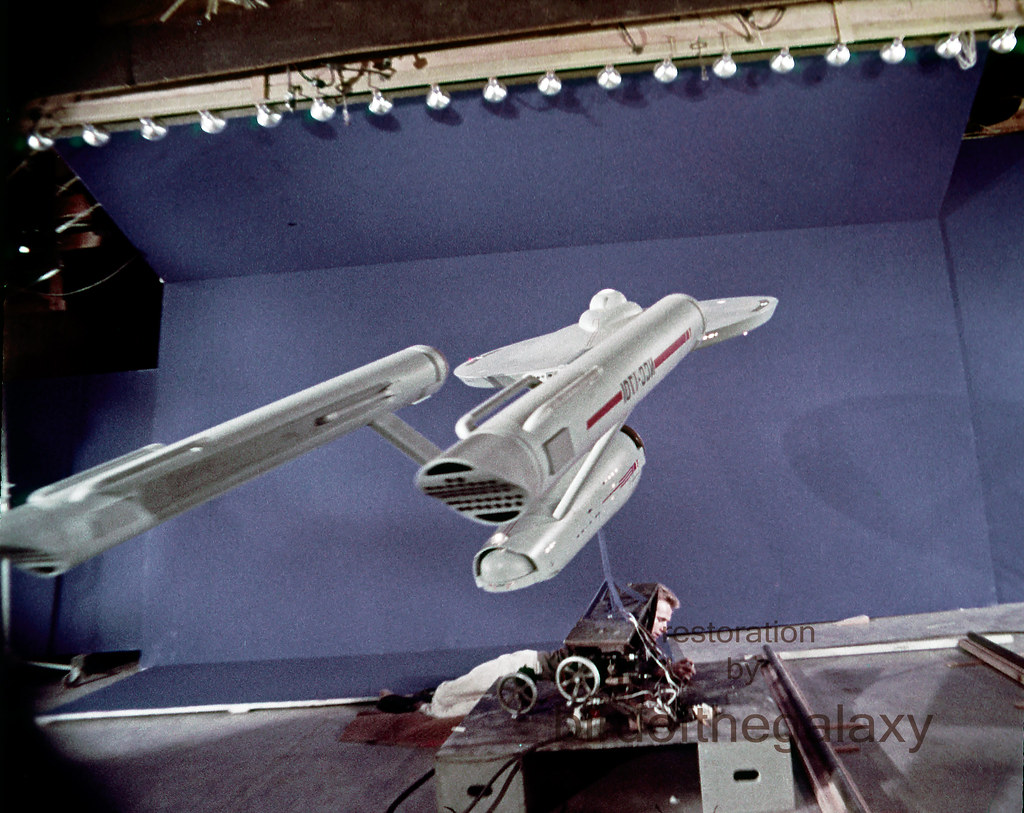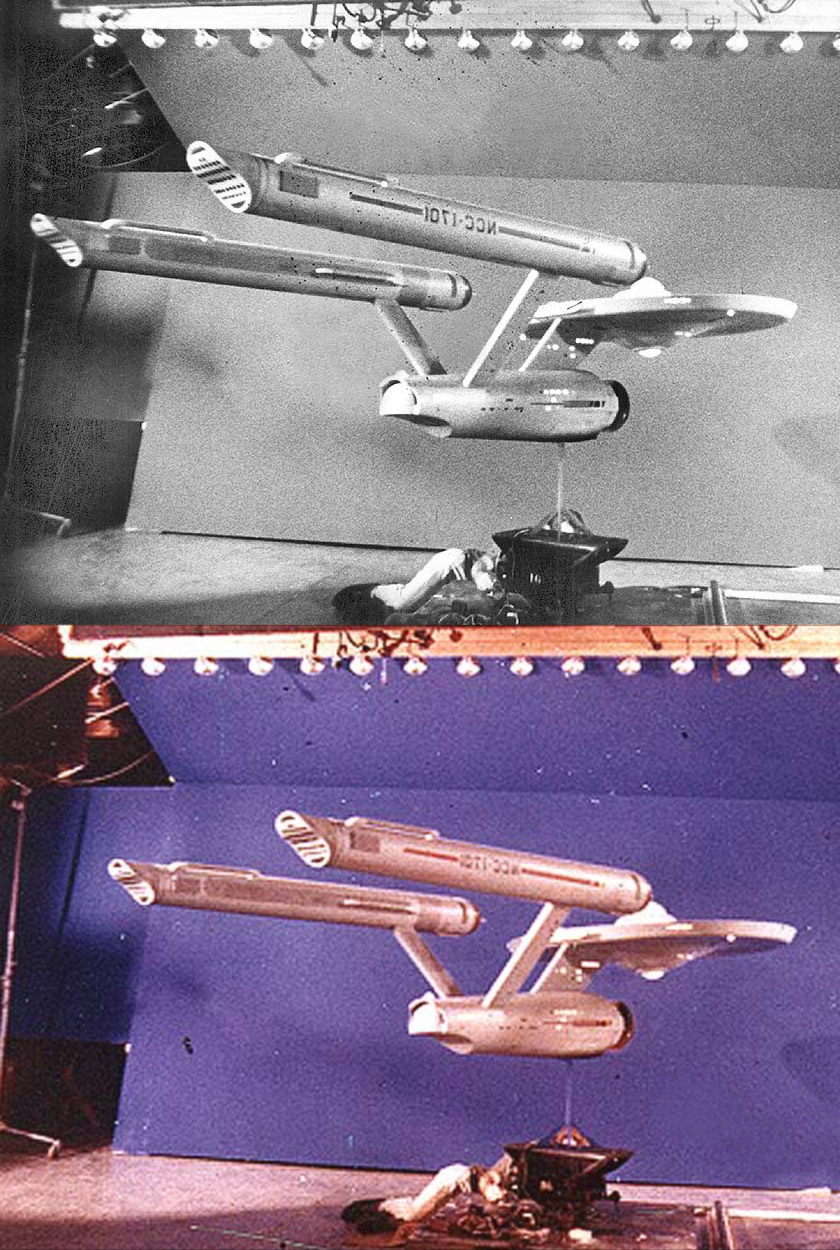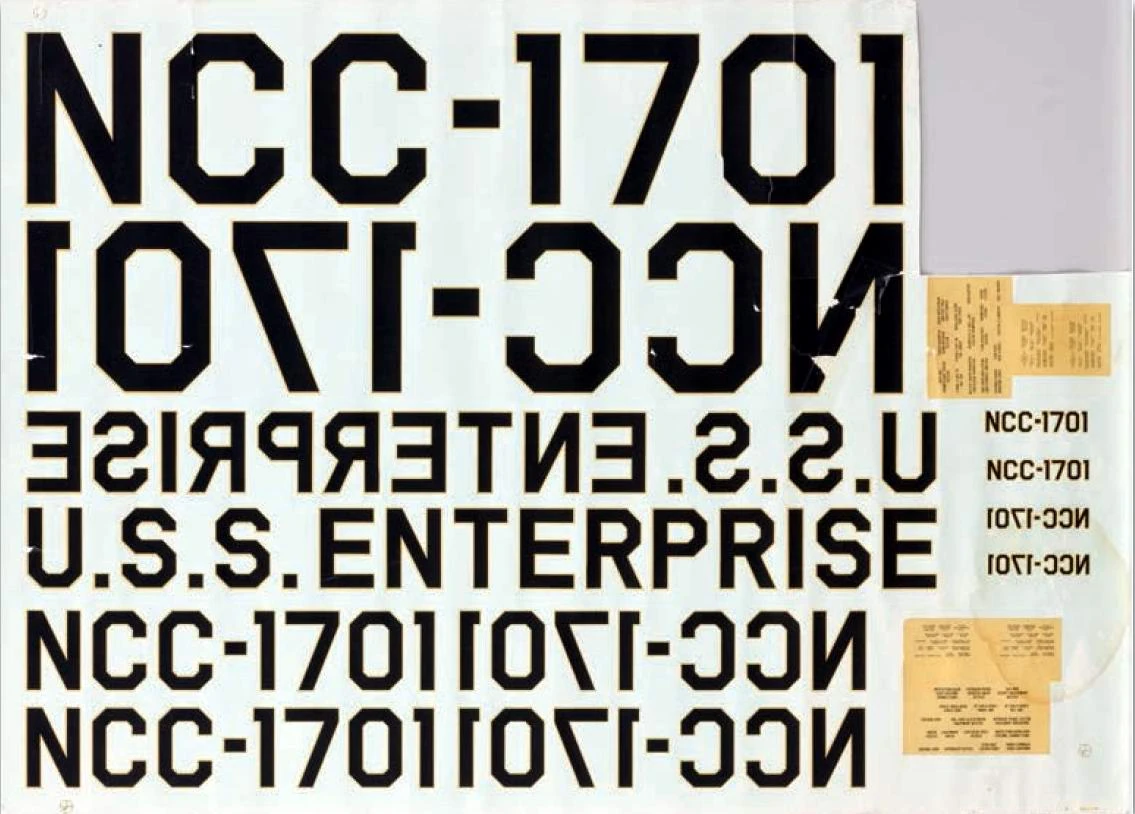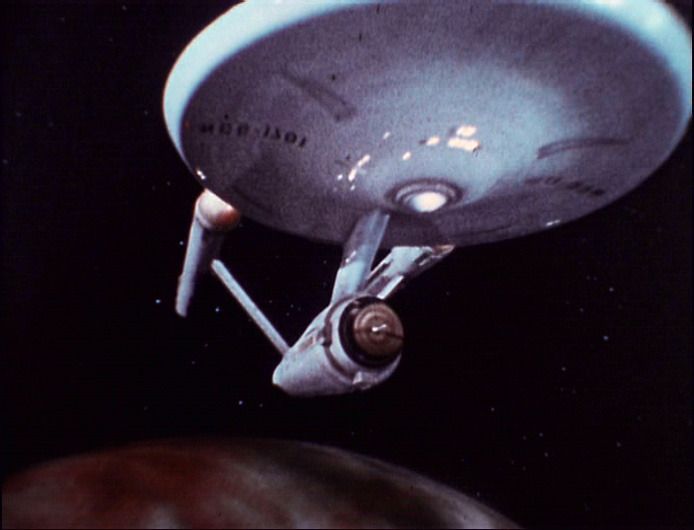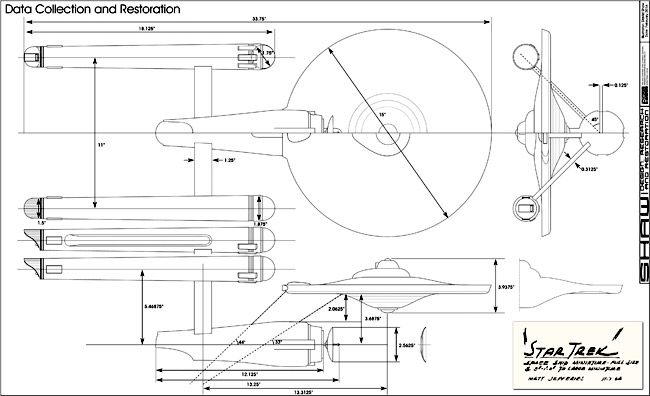Although he is largely recognized now, particularly by those who paid attention to such things, Richard Datin wasn't always given the credit he deserves as the man who built the 33 in. and 11 ft. filming models of the original TOS Enterprise. He also built the familiar miniature set of the ship's Flight Deck that housed the small Galileo shuttlecraft filming miniature. And finally he also built the K7 space station, albeit the K7 was a modification of a pre-existing model. And while he didn't build the small shuttlecraft miniature he did once repair it when he built the famous hangar deck miniature set.
Last November (2015) Richard Datin's daughter released a new book that sets to put the record straight on the man who actually built the starship designed by Matt Jeffereies: http://www.amazon.com/Enterprise-NC...r=8-1&keywords=Enterprise+and+the+model+maker
It does talk about dimensions, paint colours, materiels and construction details. It sets out to denounce and debunk some long accepted "truths" reprinted in some respected publications. It certainly asserts that no original drawings of the final form of the ship ever appeared in print no matter what has been claimed by various sources. That said it does acknowledge some respectable fan efforts have been done over the years.
Datin appears disappointed and regretful that he was never consulted for any of the 11 footer's previous restorations. He was happy to hear the model was finally getting the present recognition and respectful restoration it deserves.
I think there are some timeline errors in the book that Datin's daughter misunderstood or got wrong. For one thing she seems to confuse the ship's appearance in WNMHGB with how the ship appeared throughout the first season.
It also addresses the gridline issue. Datin asserts that no gridlines existed when he delivered the finished model. He doesn't know exactly when they were added, but he thinks it was quite sometime into the first or second season. Regarding the grid or seam lines that appeared later (on the secondary hull and nacelles) he asserts he never saw such lines added to the model during production. He suspects those lines began to appear faintly along seams on the model discolouring the paint with age and subsequently Ed Meriecki mistook those lines as supposing to be there and enhanced them along with the saucer gridlines.
An interesting notation on the colour scheme of the Hangar Flight Deck ministure set. It is asserted the colours were predominantly grey and green/grey with no mention of any beige like tones whatsoever despite what some still photos seem to show.
Also the observation deck windows and overhead panels were frosted to create the effect seen onscreen. The unseen backsides of the observation deck were supposedly open to allow studio lights to light the windows. Smaller lights were lit by small individual bulbs.
The flight deck miniature set was supposedly about 10 ft. long, about 6 ft. wide at the open foward end and about 5 ft. wide at the aft end at the clamshell doors. The set was originally supposed to allow for a while removable port side, but this was nixed during construction and thus limited photography solely from the open forward end.
If there is a disappointment to this book it's in the lack of good images of original source materiels. We don't get to clearly see (at least well) original construction drawings although there are tantalizing glimpses. We also don't get to see any previously unreleased shots of the original Enterprise filming models.
Nonetheless at any rate I do recommend this book for those interested in such things. It's certainly not heavy reading and while the book's focus is predominantly on Datin's involvement with Star Trek it does also touch on his life before and after TOS.
Last November (2015) Richard Datin's daughter released a new book that sets to put the record straight on the man who actually built the starship designed by Matt Jeffereies: http://www.amazon.com/Enterprise-NC...r=8-1&keywords=Enterprise+and+the+model+maker
It does talk about dimensions, paint colours, materiels and construction details. It sets out to denounce and debunk some long accepted "truths" reprinted in some respected publications. It certainly asserts that no original drawings of the final form of the ship ever appeared in print no matter what has been claimed by various sources. That said it does acknowledge some respectable fan efforts have been done over the years.
Datin appears disappointed and regretful that he was never consulted for any of the 11 footer's previous restorations. He was happy to hear the model was finally getting the present recognition and respectful restoration it deserves.
I think there are some timeline errors in the book that Datin's daughter misunderstood or got wrong. For one thing she seems to confuse the ship's appearance in WNMHGB with how the ship appeared throughout the first season.
It also addresses the gridline issue. Datin asserts that no gridlines existed when he delivered the finished model. He doesn't know exactly when they were added, but he thinks it was quite sometime into the first or second season. Regarding the grid or seam lines that appeared later (on the secondary hull and nacelles) he asserts he never saw such lines added to the model during production. He suspects those lines began to appear faintly along seams on the model discolouring the paint with age and subsequently Ed Meriecki mistook those lines as supposing to be there and enhanced them along with the saucer gridlines.
An interesting notation on the colour scheme of the Hangar Flight Deck ministure set. It is asserted the colours were predominantly grey and green/grey with no mention of any beige like tones whatsoever despite what some still photos seem to show.
Also the observation deck windows and overhead panels were frosted to create the effect seen onscreen. The unseen backsides of the observation deck were supposedly open to allow studio lights to light the windows. Smaller lights were lit by small individual bulbs.
The flight deck miniature set was supposedly about 10 ft. long, about 6 ft. wide at the open foward end and about 5 ft. wide at the aft end at the clamshell doors. The set was originally supposed to allow for a while removable port side, but this was nixed during construction and thus limited photography solely from the open forward end.
If there is a disappointment to this book it's in the lack of good images of original source materiels. We don't get to clearly see (at least well) original construction drawings although there are tantalizing glimpses. We also don't get to see any previously unreleased shots of the original Enterprise filming models.
Nonetheless at any rate I do recommend this book for those interested in such things. It's certainly not heavy reading and while the book's focus is predominantly on Datin's involvement with Star Trek it does also touch on his life before and after TOS.
Last edited:

